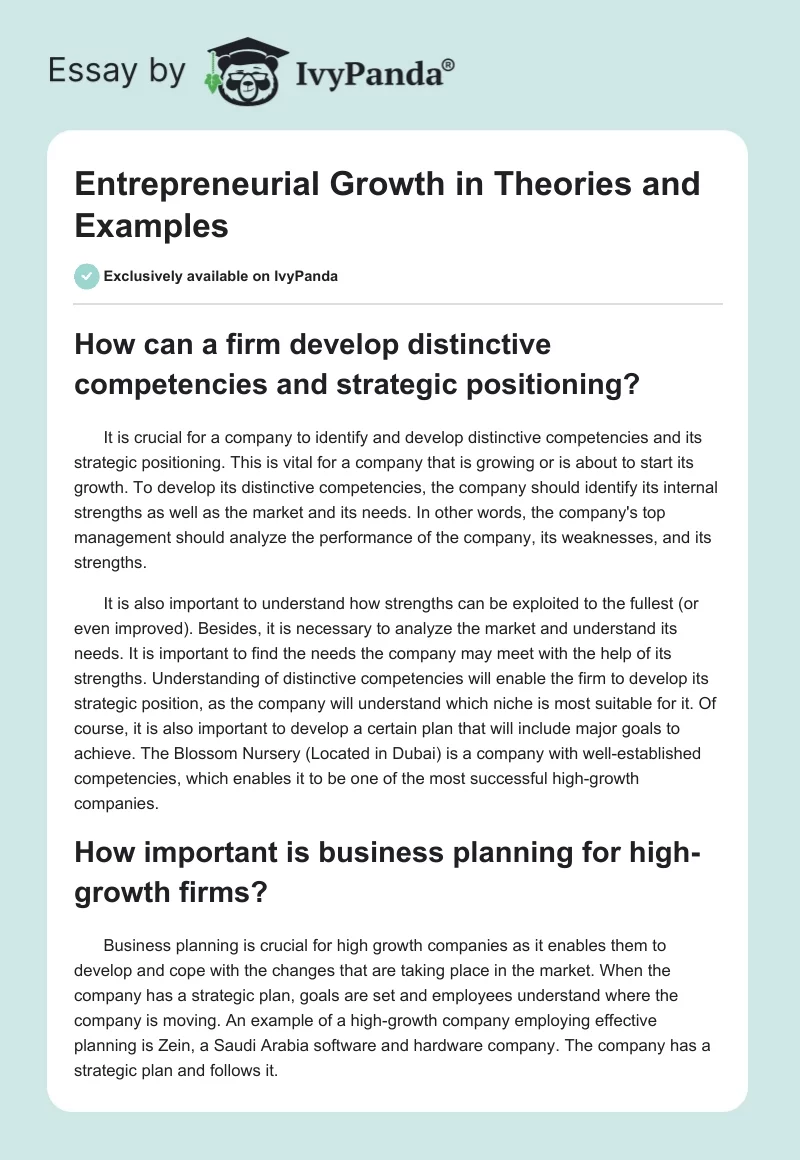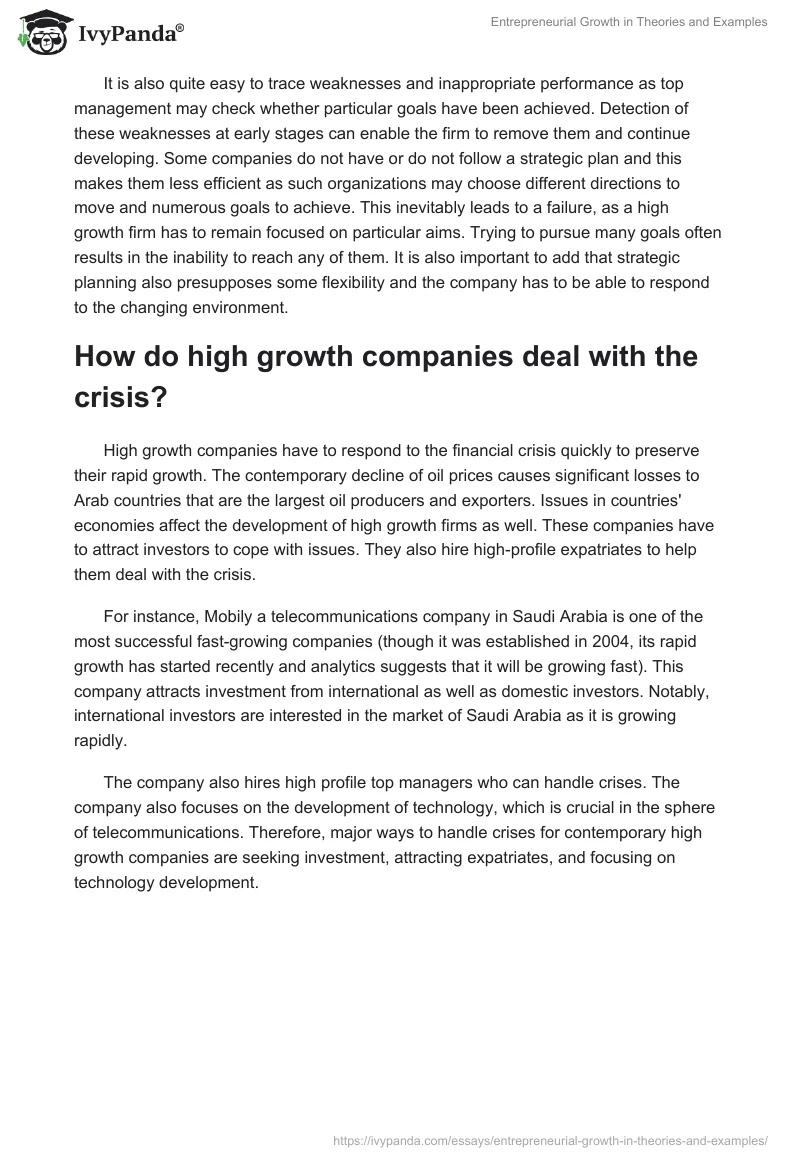How can a firm develop distinctive competencies and strategic positioning?
It is crucial for a company to identify and develop distinctive competencies and its strategic positioning. This is vital for a company that is growing or is about to start its growth. To develop its distinctive competencies, the company should identify its internal strengths as well as the market and its needs. In other words, the company’s top management should analyze the performance of the company, its weaknesses, and its strengths.
It is also important to understand how strengths can be exploited to the fullest (or even improved). Besides, it is necessary to analyze the market and understand its needs. It is important to find the needs the company may meet with the help of its strengths. Understanding of distinctive competencies will enable the firm to develop its strategic position, as the company will understand which niche is most suitable for it. Of course, it is also important to develop a certain plan that will include major goals to achieve. The Blossom Nursery (Located in Dubai) is a company with well-established competencies, which enables it to be one of the most successful high-growth companies.
How important is business planning for high-growth firms?
Business planning is crucial for high growth companies as it enables them to develop and cope with the changes that are taking place in the market. When the company has a strategic plan, goals are set and employees understand where the company is moving. An example of a high-growth company employing effective planning is Zein, a Saudi Arabia software and hardware company. The company has a strategic plan and follows it.
It is also quite easy to trace weaknesses and inappropriate performance as top management may check whether particular goals have been achieved. Detection of these weaknesses at early stages can enable the firm to remove them and continue developing. Some companies do not have or do not follow a strategic plan and this makes them less efficient as such organizations may choose different directions to move and numerous goals to achieve. This inevitably leads to a failure, as a high growth firm has to remain focused on particular aims. Trying to pursue many goals often results in the inability to reach any of them. It is also important to add that strategic planning also presupposes some flexibility and the company has to be able to respond to the changing environment.
How do high growth companies deal with the crisis?
High growth companies have to respond to the financial crisis quickly to preserve their rapid growth. The contemporary decline of oil prices causes significant losses to Arab countries that are the largest oil producers and exporters. Issues in countries’ economies affect the development of high growth firms as well. These companies have to attract investors to cope with issues. They also hire high-profile expatriates to help them deal with the crisis.
For instance, Mobily a telecommunications company in Saudi Arabia is one of the most successful fast-growing companies (though it was established in 2004, its rapid growth has started recently and analytics suggests that it will be growing fast). This company attracts investment from international as well as domestic investors. Notably, international investors are interested in the market of Saudi Arabia as it is growing rapidly.
The company also hires high profile top managers who can handle crises. The company also focuses on the development of technology, which is crucial in the sphere of telecommunications. Therefore, major ways to handle crises for contemporary high growth companies are seeking investment, attracting expatriates, and focusing on technology development.
What are the traits of professionalism that have been argued by researchers to contribute to successful growth-oriented firms?
An effective employee that can contribute to the development of the high growth firm often possesses certain professional and personal traits. First, these people outperform their colleagues in numerous settings. These people are ready to develop and grow. Notably, their behavior corresponds to the major values of the company. It is important, as the employee has to share the company’s values; otherwise, his/her decision may negatively affect the further development of the company.
Clearly, these professionals are highly competent in their field (as well as in other fields). They are high-profile professionals who often get a promotion. Importantly, these people are ready to learn new things. They are also eager to experience new things. It is obvious that they are not afraid of changes, but often they create the need to start changes in the firm. These employees are effective problem-solvers. They are often able to cope with crises. Of course, they have the necessary leadership skills and can inspire employees to contribute to the development of the company. Basically, these people are major drivers of change and development in the company. In Air Arabia, it has been acknowledged and the company tries to hire only effective employees who can be expatriates or domestic professionals.
Why the region’s importance of succession planning is important for entrepreneurial growth companies?
Succession planning is of paramount importance for high-growth companies as it enables them to hire high-profile professionals who will be able to drive the change and contribute to the company’s growth. One of the most dynamic high-growth firms in the UAE (as well as in the world) is the job search website Bayt.com. Clearly, the company has to follow a succession plan. Thus, the company has a plan where all key jobs are mentioned.
More so, there is some period when new employees should be hired. There are no particular names, but there are particular responsibilities each employee has. There are also certain goals each employee has to achieve within certain periods. It is necessary to note that succession planning is an efficient way to remain focused on goals and the company’s strategic plan. It is also quite easy to assess the performance of each employee and decide whether someone needs training, promotion or it is necessary to fire somebody.
What are the different schools of thought regarding how an entrepreneurial growth company can develop a high growth culture?
The Great Person school of thought of entrepreneurship holds that an entrepreneur is a person who possesses exclusive traits of an inspiring leader and who is able to predict the changes and respond to them. According to this school of thought, effective entrepreneurs have the inborn capacity and the necessary skills cannot be taught. The Psychological characteristics school has a similar view on entrepreneurship. It is also believed that effective entrepreneurs have to possess certain psychological traits including risk-taking, responsibility, and commitment. Just Falafel can be regarded in terms of these two schools of thought, as the founder of the company is a great man of vision.
The Classical school of thought focuses on the importance of creativity and innovation. There is no focus on personal traits. The management school of thought focuses on management and the importance of efficient management. Representatives of the school stress that many ventures fail due to inappropriate management each year. Representatives of the school may note that Just Falafel is an effective and fast-growing company due to efficient management rather than inspiring leadership (which is also a constituent part of management).
What are the benefits and pitfalls of franchising as a mechanism to develop an entrepreneurial growth company?
Franchising provides numerous opportunities for entrepreneurs but it is also associated with some hazards. Thus, entrepreneurs obtain significant help (financial, managerial, training, and so on). Entrepreneurs can run a business that is well-established and learn more about effective ways to manage a venture. This can be the first step before starting a new venture in a similar field. However, there are also certain hazards, as entrepreneurs will have to remain within specific boundaries.
Their creativity and innovation strive may be blocked by strict rules of the franchisor. A successful example of such a franchise is Herfy, which is a fast-growing company. The chain is spreading across the Middle East very fast. The company’s managers are still able to employ their creativity when it comes to the spread and development of new products adjusted to regional peculiarities.
What is the role of innovation in a high growth firm?
Innovation is one of the crucial components of any high-growth company strategy. These companies do not have considerable resources and they should always be in motion. Clearly, innovations are the driving force of any development. Dubai Desert Extreme LLC can be seen as an exemplary high-growth company that benefits from its focus on innovations. The company has always come up with novelties that correspond to changing trends and needs of customers.
Clearly, action sport is a high-growth market in the Middle East (as well as in the entire world). The market is also characterized by innovations and constant development. At the same time, in all other fields, high-growth companies also need to be innovative. The development of technology creates new trends and people’s needs are changing constantly. Each high-growth company should provide innovative products or come up with innovative management strategies to preserve its growth and remain competitive.


